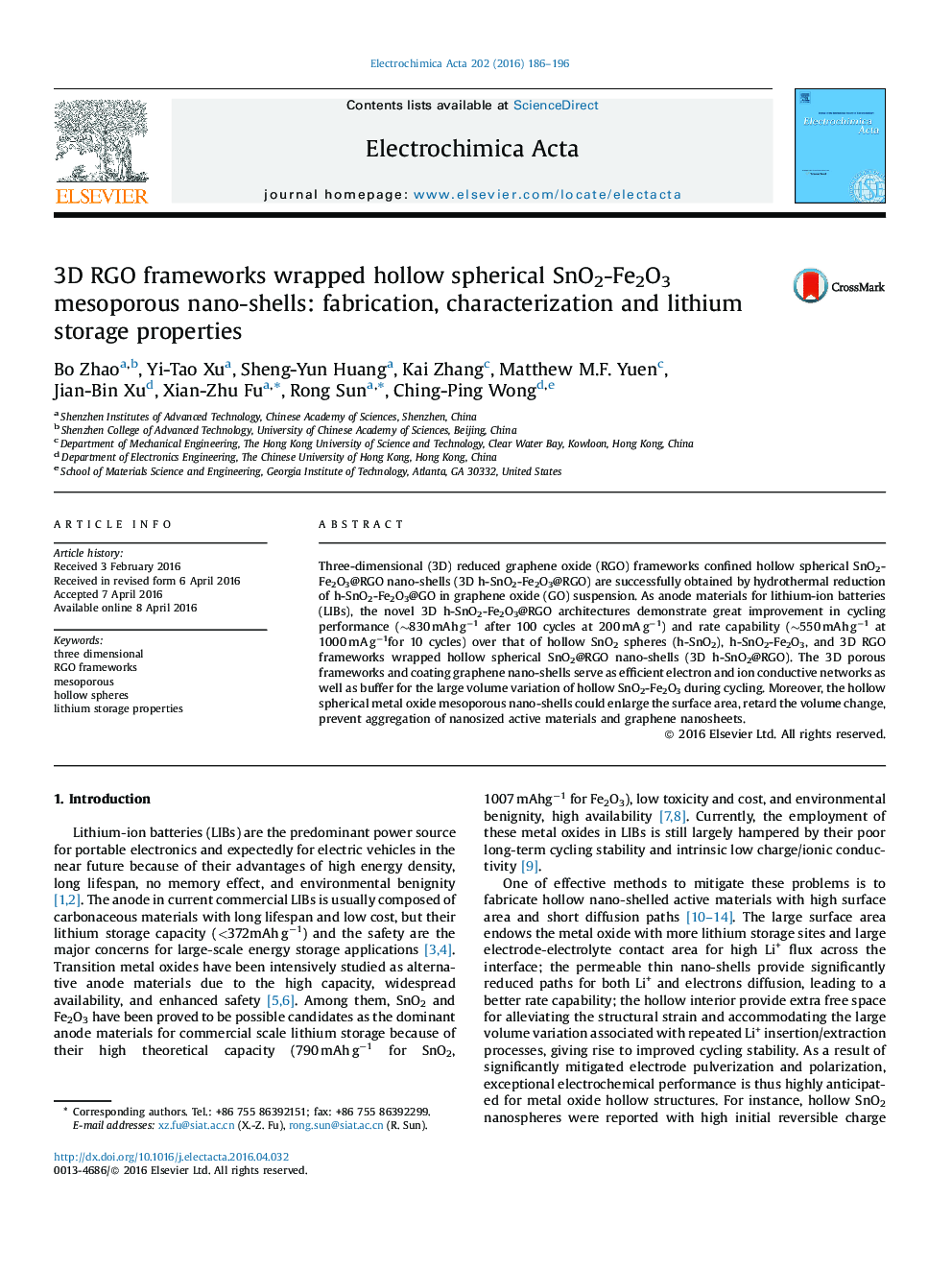| Article ID | Journal | Published Year | Pages | File Type |
|---|---|---|---|---|
| 183069 | Electrochimica Acta | 2016 | 11 Pages |
Three-dimensional (3D) reduced graphene oxide (RGO) frameworks confined hollow spherical SnO2-Fe2O3@RGO nano-shells (3D h-SnO2-Fe2O3@RGO) are successfully obtained by hydrothermal reduction of h-SnO2-Fe2O3@GO in graphene oxide (GO) suspension. As anode materials for lithium-ion batteries (LIBs), the novel 3D h-SnO2-Fe2O3@RGO architectures demonstrate great improvement in cycling performance (∼830 mAh g−1 after 100 cycles at 200 mA g−1) and rate capability (∼550 mAh g−1 at 1000 mA g−1for 10 cycles) over that of hollow SnO2 spheres (h-SnO2), h-SnO2-Fe2O3, and 3D RGO frameworks wrapped hollow spherical SnO2@RGO nano-shells (3D h-SnO2@RGO). The 3D porous frameworks and coating graphene nano-shells serve as efficient electron and ion conductive networks as well as buffer for the large volume variation of hollow SnO2-Fe2O3 during cycling. Moreover, the hollow spherical metal oxide mesoporous nano-shells could enlarge the surface area, retard the volume change, prevent aggregation of nanosized active materials and graphene nanosheets.
